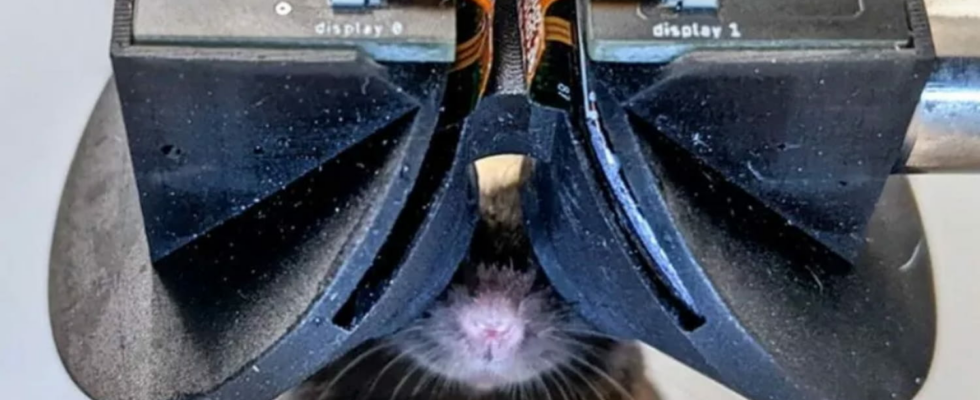A team of American researchers has developed a virtual reality headset for mice. An invention that may seem futile, but which promises notable progress for studying human diseases.
Tech fans have apparently found their favorite Christmas gift: the Meta Quest 3 virtual reality headset. It’s simple, the companion app for Meta’s Quest headsets is currently the most downloaded on the American App Store in the free apps category. Thanks to its improved performance and its enriched content catalog, the Quest 3 model has clearly found its audience. We are a long way from the overpriced Apple Vision Pro! But humans are no longer the only ones who can benefit from virtual worlds!
In fact, a team of scientists from Cornell University in the United States has decided that mice are entitled to it too! Researchers managed to create a miniature VR headset for rodents, called MouseGoggles, using inexpensive and readily available materials, such as smartwatch screens and small lenses. Enough to allow many laboratories, even those with limited budgets, to consider its use.
The mouse does not wear the headset per se, but stands on a treadmill with its head fixed on the device. This way, she can move without changing place. The headset provides visual stimulation over a wide field of view while tracking the mice’s eye movements and variations in the size of their pupils using integrated cameras. Such precision is a first for this equipment adapted to mice.
This innovation may make you smile, but in reality has a goal that is as serious as it is crucial. Indeed, MouseGoggles, by combining VR and eye tracking (called pupillometry), makes it possible to immerse rodents in immersive virtual environments to better understand the neural activity that underlies spatial navigation and memory function. In other words, it allows scientists to create precise scenarios in order to study the neurological and behavioral reactions of mice, and thus, ultimately, understand the mechanisms underlying certain neurodegenerative diseases, such as Alzheimer’s.
Because a thorough understanding is essential to develop more effective treatments. Researchers have previously found that mice with this disease had unexplained reductions in cerebral blood flow. Using MouseGoggles, they learned that when this flow was “unblocked”, memory tended to return within just a few hours in the majority of mice.
By exploring how improvements in blood flow influence neuronal function, researchers hope to uncover new therapeutic avenues for Alzheimer’s patients, but also identify the mechanisms underlying memory loss and spatial disorientation, two symptoms keys to the disease. Subsequently, the team would like to adapt its headset to other types of rodents, such as rats and tree shrews, and why not integrate other senses, such as taste and smell, into the VR simulation.
